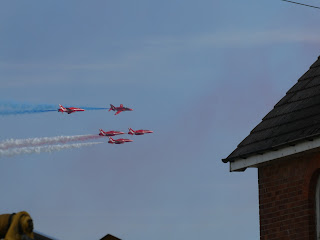We are now in the Lakes District staying in a lovely medieval village of Cartmel 2 miles from Grange Over Sands which is on Morecombe Bay.
We are staying in a lovely cottage called The Nest, one of two cottages called Maggie Puddle Cottages in Haggs Lane. The name alone had me wanting to stay here.
In the village are some lovely vintage and antique stores, a craft brewery, a wine shop, traditional tea-rooms, a number of pubs and restaurants and a cheese factory selling locally produced cheeses, chutneys, jams, biscuits and cakes.
There is also the famous 12th century priory, steeped in history and has beautiful stained glass windows and the bells are rung frequently during the day.
We are staying in a lovely cottage called The Nest, one of two cottages called Maggie Puddle Cottages in Haggs Lane. The name alone had me wanting to stay here.
In the village are some lovely vintage and antique stores, a craft brewery, a wine shop, traditional tea-rooms, a number of pubs and restaurants and a cheese factory selling locally produced cheeses, chutneys, jams, biscuits and cakes.
There is also the famous 12th century priory, steeped in history and has beautiful stained glass windows and the bells are rung frequently during the day.
 |
| Cartmel Priory |



















































